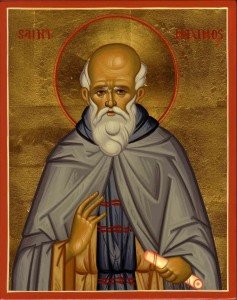In the last issue of this article, I began to describe Maximus’ treatment of the Transfiguration of Christ. He was not, however, content simply in describing the otherness of such a vision. His fundamental concern is above all ascetic and therefore refreshingly practical. Hence, most prominent among the theological themes Maximus touched upon is that of the process by which the vision of Christ transfigured may be attained, addressing the question: What relevance does the deification of the assumed human nature of the divine Logos have for our own lives? It is no coincidence, therefore, that it is by focusing on Maximus’ treatment of the Transfiguration that the clearest and most succinct answer to this fundamentally significant question is to be found. Maximus’ vision of Christ transfigured is comprised of two very discernible elements: firstly, that of the deified humanity of Christ, and secondly that of the manifestation of his divinity. Both elements are evident in Maximus’ writing on the Dionysian phrase, his visible Theophany where Maximus maintains that visible refers to the vision of his divine body or the animated flesh of Christ, which bears witness to the Incarnation as an event of permanent significance. Maximus proceeds to contrast Christ’s visible Theophany to what he calls his noetic Theophany, which refers to the intelligible revelation of the divinity of Christ, received, that is, through the intellect and which corresponds to St. Dionysius’ noetic illumination.
In this present life, however, the noetic theophany of Christ can only be experience in part. For as Maximus adds, this vision will be communicated to us then in a more perfect way through the intellect. Hence, a more perfect intelligible perception of the divinity of Christ is possible only in the Age to Come, that is, only when the saints will have reached the Christlike state of incorruption and immortality.
I know that it may have been a real struggle to get through this. What Maximus is trying to say is that the Transfiguration of Christ can, when we consider it intellectually, tell us not only that Jesus was God Himself, that is divine, but also that it tells us about our own human nature. All this came about because Maximus and others were attempting to understand not only how Jesus could be both God and man but also what the Incarnation of God has meant for humanity. Again, the idea of Theosis is in the background.

